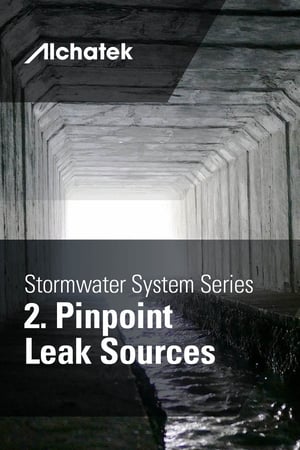
 Leaks in stormwater systems can be elusive, often manifesting their symptoms far from the actual point of origin. This is especially true for interconnected systems like manholes or box culverts, where water can travel significant distances before showing visible signs of a leak. Accurate identification of the leak source is crucial for any effective repair operation. Failure to correctly locate the leak can result in wasted time, resources, and ultimately, unsuccessful repair.
Leaks in stormwater systems can be elusive, often manifesting their symptoms far from the actual point of origin. This is especially true for interconnected systems like manholes or box culverts, where water can travel significant distances before showing visible signs of a leak. Accurate identification of the leak source is crucial for any effective repair operation. Failure to correctly locate the leak can result in wasted time, resources, and ultimately, unsuccessful repair.
Where to Begin the Search
To start the search for a leak, maintenance teams often look for visible signs like water pooling, erosion, staining, or the accumulation of sediment. These are valuable indicators but can be misleading if the leak's origin is not directly adjacent to these signs. Mapping out the stormwater system's topology can offer insights into how water flows through it, providing clues about where to begin the investigation.
Types of Leaks in Different Components
The types of leaks can vary depending on the component, making it essential to understand the characteristics of each. For example, leaks in curb inlets may manifest as localized pooling of water or sediment deposition around the inlet. In contrast, leaks in manholes could result in soil erosion around the manhole cover or even within the manhole structure. Each component has its own set of challenges when it comes to leak detection, so it's crucial to approach them individually yet systematically.
The Complexity of Interconnected Systems
Interconnected systems like box culverts and manholes add another layer of complexity to leak source identification. Water from a leak can travel through multiple channels before finally emerging, making it difficult to pinpoint the origin. In such cases, a systematic approach to eliminating potential leak sources is invaluable. Teams may have to inspect multiple connected components to rule out false positives and zero in on the real leak source.
Advantages of Correct Identification
Accurately identifying the leak source has several benefits. The first is, of course, the efficiency of the repair operation. Targeted repairs save time and materials. Additionally, accurate identification can also prevent further deterioration. When leaks go unaddressed or are incorrectly repaired, the risk of soil erosion, sinkholes, structural weakness, and even potential system failure increases.
A Highly Effective Sealing Material
After accurately identifying the leak source, polyurethane grouts serve as a highly effective sealing material. Their application is targeted, preventing waste and ensuring that the leak is completely sealed. Polyurethane grouts also offer the benefit of compatibility with different kinds of surfaces, making them suitable for a wide range of stormwater system components.
Key Takeaways
In summary, accurate leak source identification is critical for effective and efficient repair of stormwater systems. The process involves a deep understanding of the system's components and the benefits of polyurethane grouts for effective sealing. Maintenance teams can greatly benefit from a systematic approach to leak identification, backed by proper training and thorough documentation. This not only ensures successful repairs but also contributes to the long-term resilience and efficiency of the stormwater system.



